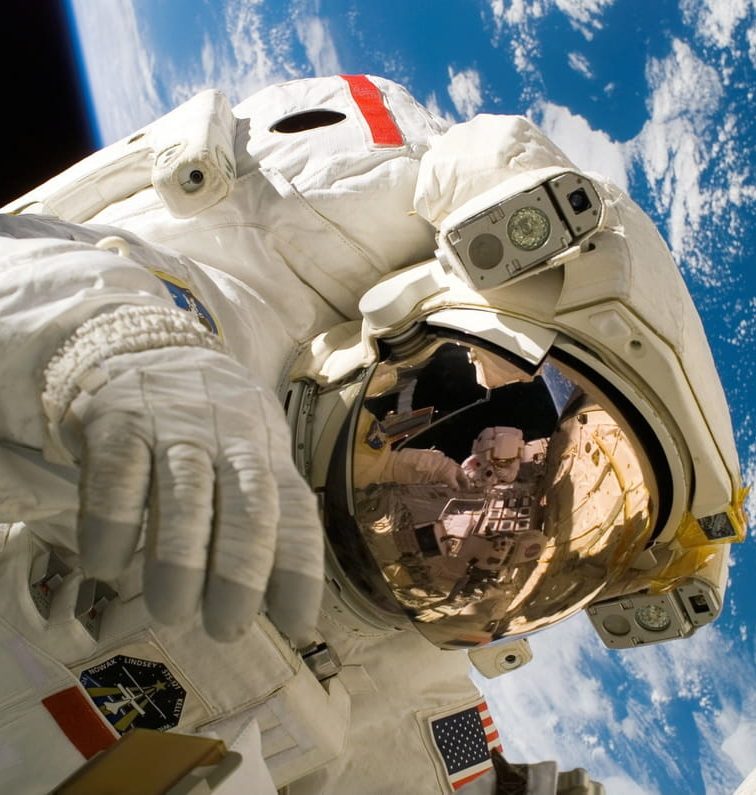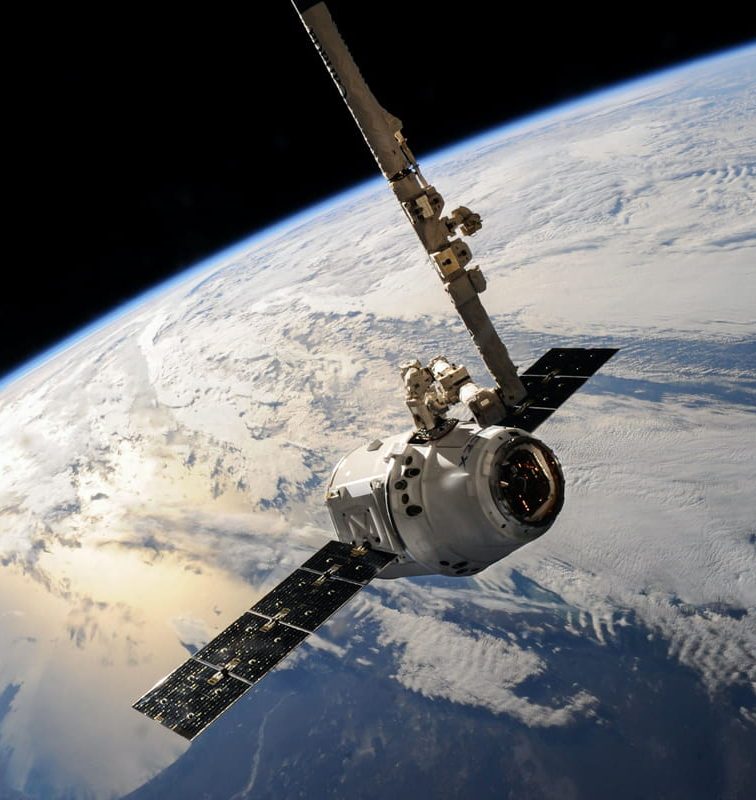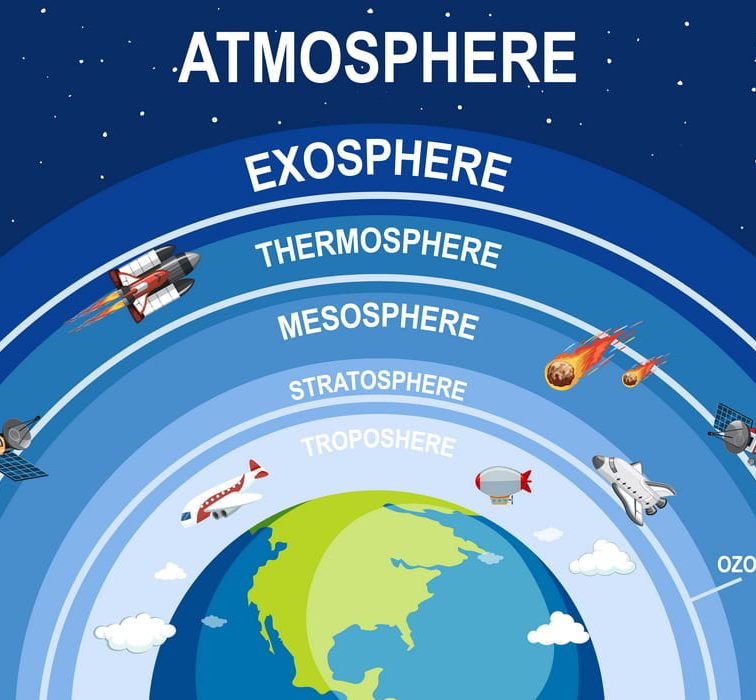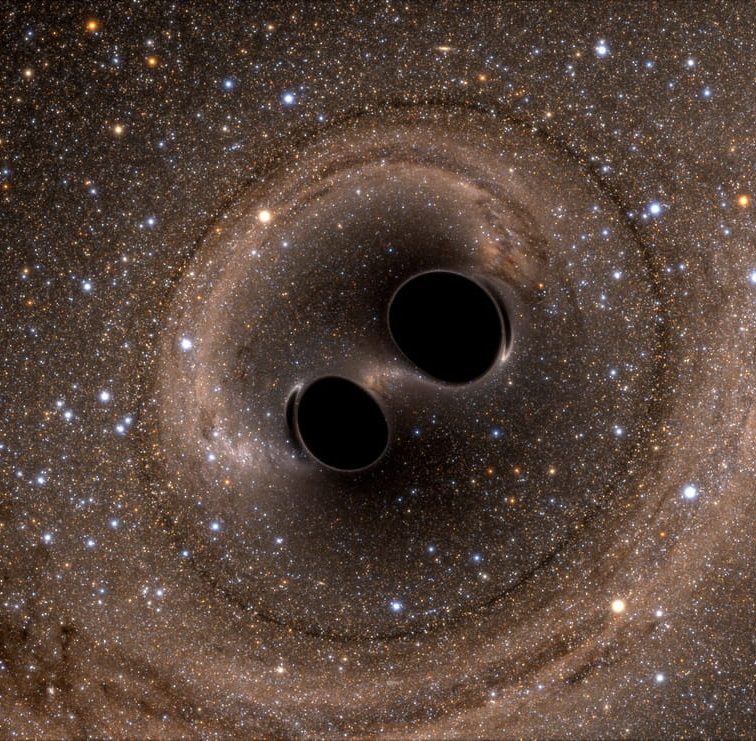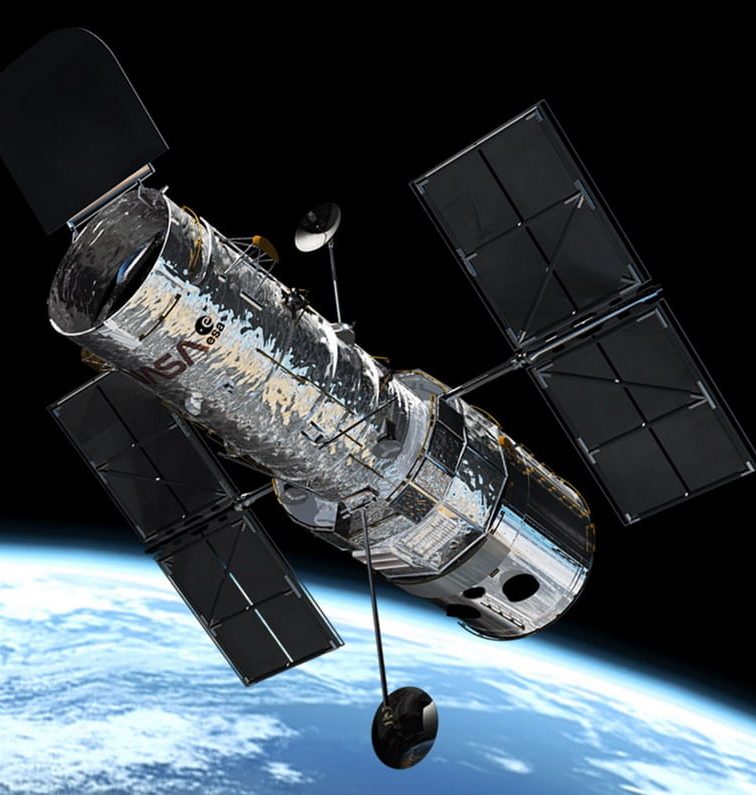Hello, space aficionados! Ready to dive (not literally, of course) into the mesmerizing realm of black holes? Here’s the thing: While black holes can be mysterious and, quite honestly, a little eerie, they’re also downright fascinating.
Whether you’re a newbie trying to grasp the basics or a seasoned astro-enthusiast looking for some fun tidbits to impress at your next nerdy get-together, I’ve got you covered. So buckle up as we launch into 30 fun facts about black holes! And remember, it’s not just about the destination; it’s the stellar journey! 🌌
1. Not So Photogenic
It might come as no surprise that black holes, by their very nature, are black. They’re so black, in fact, that they don’t emit or reflect light. Hence, taking their photographs isn’t as simple as a “say cheese” moment. Instead, what scientists usually capture is the light (or rather the absence of it) around them.
Remember that iconic image captured by the Event Horizon Telescope in 2019? That was technically the shadow of a black hole. Think of it as a silhouette rather than a portrait. So the next time you’re frustrated with bad lighting in your selfies, remember: at least you’re more photogenic than a black hole!
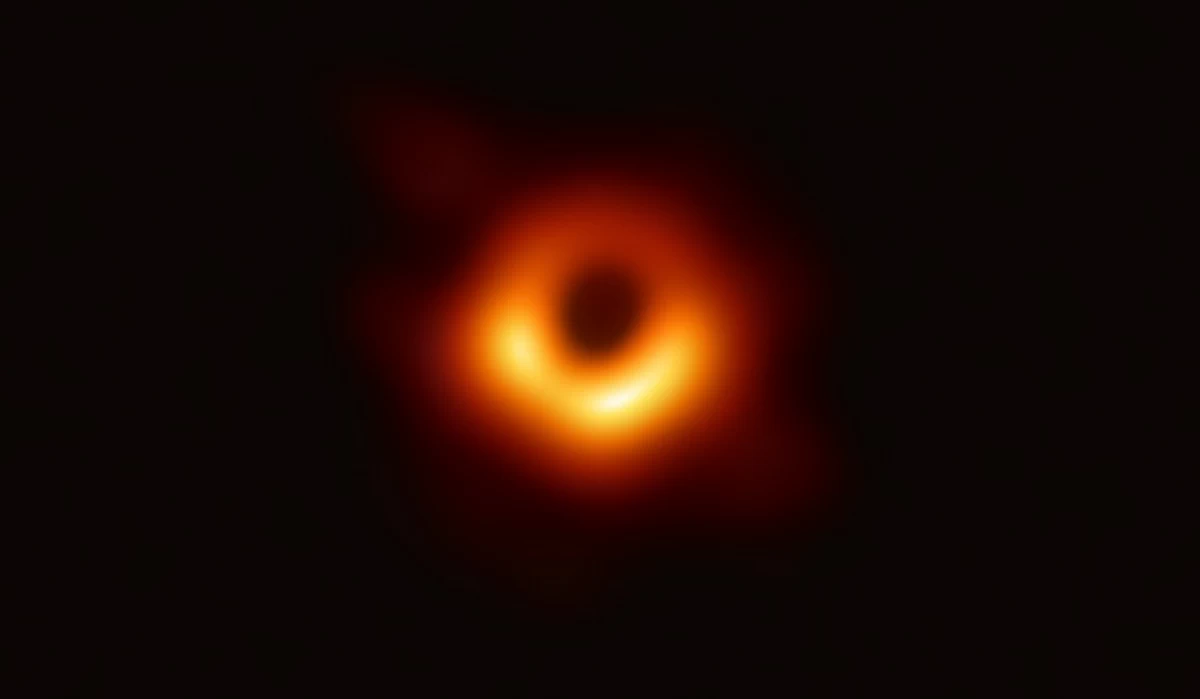
Image source: nasa.gov
2. A Storied Past: History of Galaxy & Black Holes
If we dive into the history of galaxy formation, we’ll find our enigmatic friends, black holes, at the center (literally) of it all. Here’s a not-so-obscure black hole fun fact for you: Supermassive black holes, weighing millions to billions of times more than our Sun, are believed to reside at the heart of most galaxies.
Scientists theorize that these monstrous entities play a crucial role in how galaxies are shaped and even how stars are formed. So, if you ever pondered the chicken-and-egg question about which came first, the galaxy or the black hole, well, it’s still up for debate!
3. The Hawking’s Legacy
Let’s talk celebs – not Hollywood, but the black hole kind. Stephen Hawking, a physicist you might’ve heard of (understatement of the century, right?), proposed a mind-boggling concept in the 1970s. He suggested that black holes aren’t entirely black and can emit something known as ‘Hawking radiation.’ This is due to quantum mechanical effects right at the event horizon.
If you’re scratching your head, think of it as black holes having a subtle glow, much like me after my morning coffee. Though this radiation is extremely weak for large black holes, it has profound implications for the ultimate fate of these cosmic beasts!

Image source: britannica.com
4. A Weighty Topic – But No Dieting Here!
Let’s discuss sizes, shall we? Black holes come in different sizes. The ‘lightweight’ ones, known as ‘primordial black holes,’ are theorized to be as small as a single atom but with the mass of a mountain – talk about being dense! Next up are the ‘stellar’ black holes, more typical and weighing in at about 20 times the mass of our sun.
But, if you’re thinking, “Go big or go home,” then meet the ‘supermassive’ black holes. These mammoth entities can have masses equivalent to millions or even billions of suns! 🌞 The term ‘overweight’ doesn’t quite cover it.
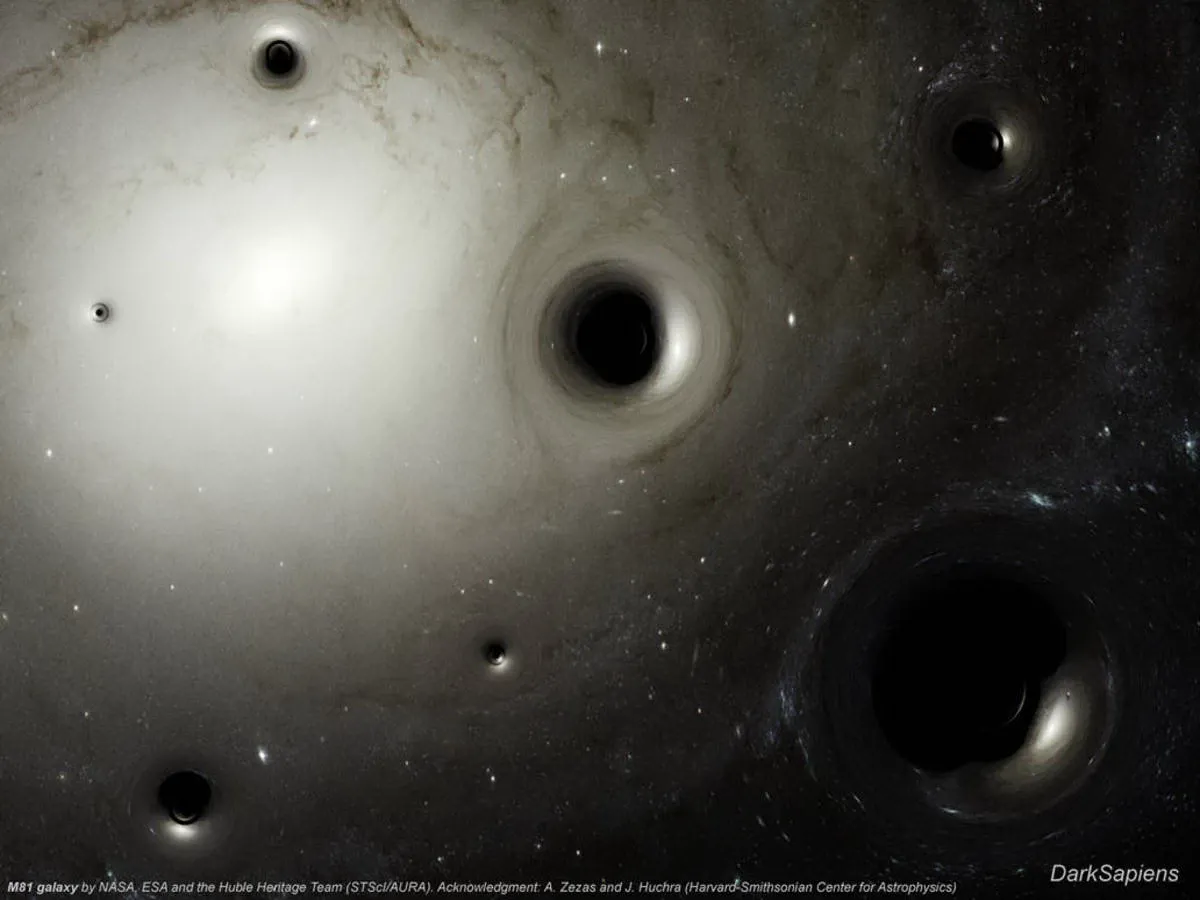
Image source: owlcation.com
5. Spin Cycle – Not Just for Your Laundry
Adding to the list of black hole fun facts, did you know black holes can spin? Yup, they’re not just sitting idly in space munching on everything. Some of them are twirling around at almost the speed of light.
This spin can influence the space around them, causing it to twist. The ones that spin incredibly fast are known as ‘Kerr black holes’. So, if the universe ever needs a DJ, you know who to call!
6. Hungry, Hungry Holes
Nope, we’re not talking about the classic board game here. Black holes have an insatiable appetite. They ‘eat’ by pulling in nearby material with their extreme gravitational force. But, don’t be fooled into thinking they eat non-stop.
In reality, most black holes go through periods of feasting and fasting. When they eat, they accumulate an accretion disk, a fancy term for a hot, swirling ring of material. The hotter the disk, the brighter it shines, often outshining all the stars in its host galaxy. Now that’s what we call a dramatic dinner!
7. A Singularity Sensation
Here’s an interesting fact that even seasoned space buffs might find intriguing: at the very heart of a black hole lies the singularity. This is where gravity crushes infinite mass into an infinitesimally small space. And when we say small, we mean really, really tiny – possibly zero volume!
Understanding this space breaks the rules of our current physics. So, if you’re ever feeling a bit “extra,” remember, even the universe has its drama points.
8. The Unseen Sirens – Gravitational Waves
Ready for a cosmic dance? When two black holes get close enough, they do a little dance before they merge, spiraling closer and closer. And their dance isn’t silent – it sends ripples across space-time known as gravitational waves.
These waves were merely theoretical until 2015 when the LIGO experiment made the groundbreaking detection. They’re like the universe’s whisper, saying, “Psst, two black holes just tied the knot!”
9. Not Just Vacuums in Space
A common misconception is that black holes act like cosmic vacuum cleaners, sucking up everything around. While their gravitational pull is formidable, it doesn’t mean planets and stars nearby are constantly getting slurped up.
If our sun were to be magically replaced by a black hole of the same mass (let’s hope not!), Earth would continue orbiting it just as it orbits the Sun now – minus the life-giving sunlight, of course. So, no, black holes aren’t the universe’s Roombas!
10. Hairless, But Not Careless
Diving a bit deeper into black hole fun facts, let’s talk hair. Not the kind on your head, but in the cosmic sense. A concept known as the “No Hair” theorem suggests that black holes can be defined by only three things: mass, charge, and spin.
Everything else, like the material’s history that formed the black hole, is lost. So, when it comes to personal details, black holes are pretty secretive!
11. A Glorious Halo – The Event Horizon
If you’ve ever heard of a point of no return, then meet the ultimate cosmic version – the event horizon. It’s the boundary surrounding a black hole where the gravitational pull becomes so strong that not even light can escape it.
Once something crosses this line, it’s game over, and it’s never coming back out. Imagine it as a one-way cosmic trapdoor. The event horizon is not a physical surface, but rather an abstract border, defining the sphere of no escape. But on the bright side, it sure has a fancy name, doesn’t it?
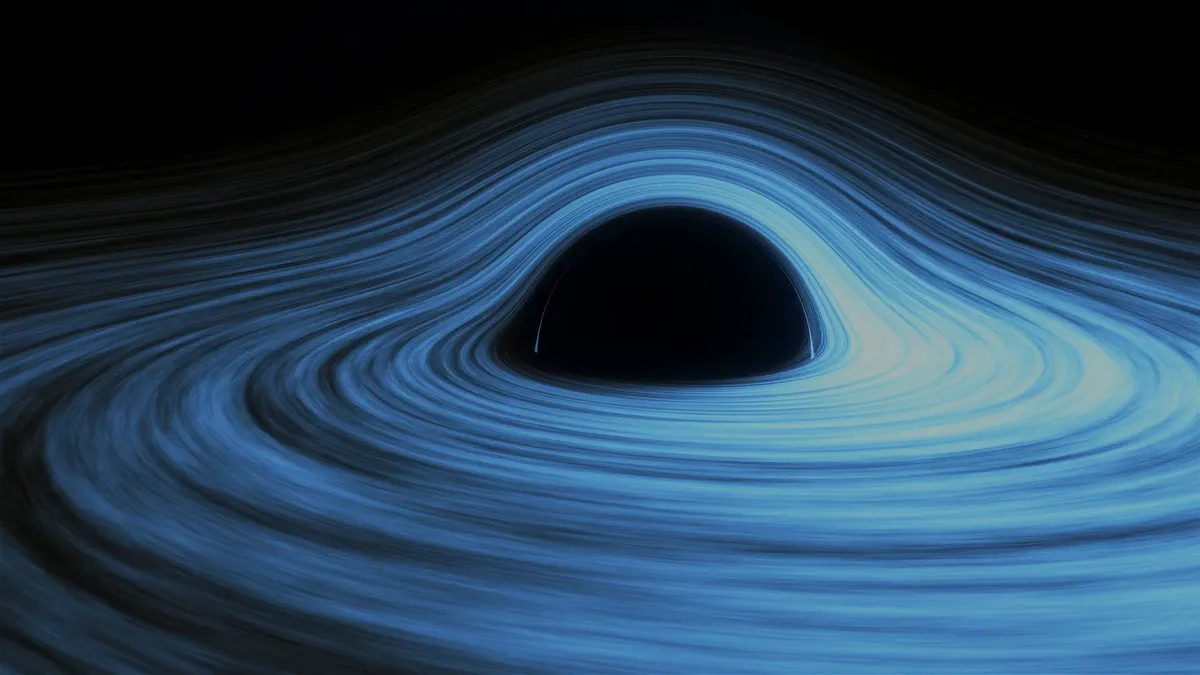
Image source: pond5.com
12. The Stellar Ghost Towns
Ever wonder where black holes come from? Most stellar black holes are born when massive stars undergo gravitational collapse at the end of their life cycles. The core contracts and the outer layers are expelled, and the core’s gravity increases, pulling everything into a small, infinitely dense point.
Talk about an explosive midlife crisis! This transformation from a star to a black hole is like watching a cosmic magic trick, with a star on one end and poof – a black hole on the other!
13. Tidal Forces – A Spaghettifying Experience
If you ever thought of taking a close-up tour around a black hole (not recommended, by the way), you’d experience what’s called ‘spaghettification.’
As you approach, the difference in gravitational pull between your head and feet would stretch you out like a piece of spaghetti. A less-than-ideal vacation experience, if you ask me. And yes, ‘spaghettification’ is a scientific term. Scientists can have a sense of humor too!
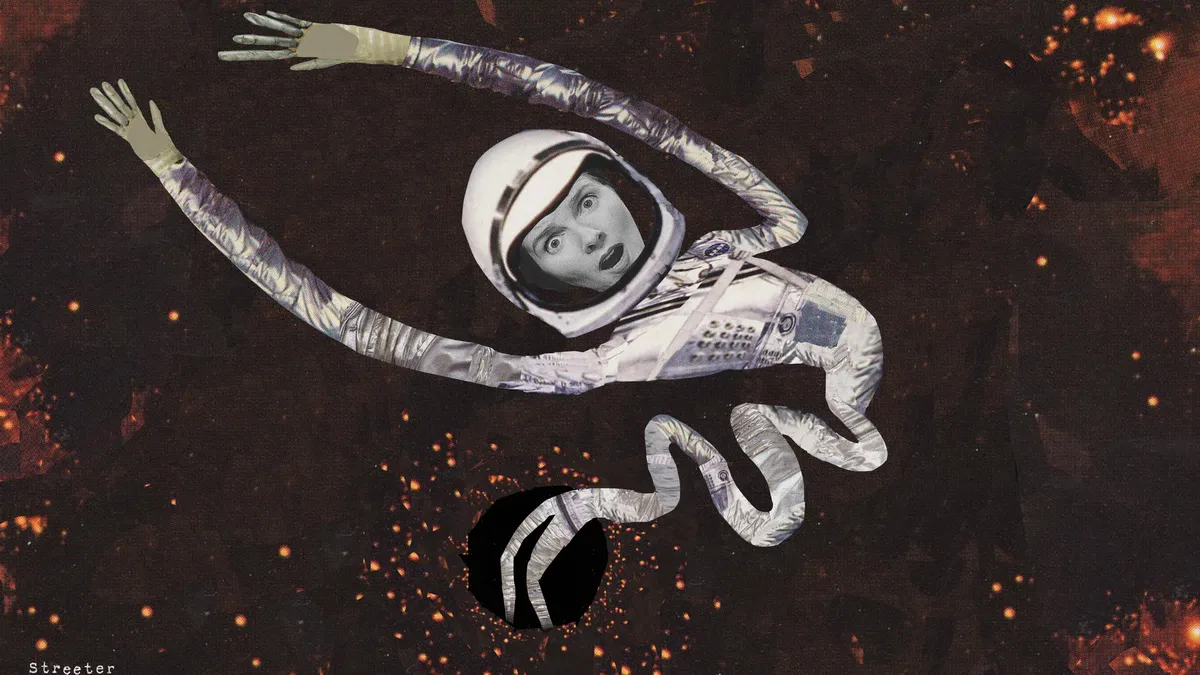
Image source: npr.org
14. Milky Way’s Hidden Monster
Looking at our peaceful night sky, you’d never guess what lurks at the heart of our galaxy. The Milky Way houses a supermassive black hole named Sagittarius A* (pronounced “Sagittarius A-star”).
It’s over 4 million times the mass of the Sun! And guess what? We’re orbiting it at a cozy distance of 26,000 light-years. Sleep tight!
15. Evaporation? In Space? Yep, That’s Right!
Building on Stephen Hawking’s groundbreaking theories, black holes can actually “evaporate” over time due to Hawking radiation. They emit particles, losing mass in the process. It’s a painfully slow event for large black holes, taking longer than the current age of the universe to even notice. But for smaller primordial black holes (if they exist), this could be a rapid process.
In theory, if they lose enough mass, they might vanish in a final explosive burst. But don’t worry; our local cosmic black holes aren’t going anywhere anytime soon!
16. Black Holes: The Universe’s Best Recyclers
Mother Nature’s ‘reduce, reuse, recycle’ mantra isn’t just for Earthlings. Black holes are the cosmos’s ultimate recyclers.
When they ‘consume’ matter, they actually convert the devoured material into energy, following our good pal Einstein’s E=mc^2 equation. This energy then gets emitted as radiation, fueling the universe with fresh energy. Talk about a green thumb… or should we say, a black one?
17. Shine Bright Like a…Black Hole?
Surprise, surprise! Black holes can be bright. Ironic, right? This comes from the interesting fact that the material they pull in doesn’t go quietly. It heats up, becoming a swirling mass of high-energy particles.
This process can produce so much radiation that the area around a supermassive black hole can outshine its host galaxy. Forget diamonds, maybe Rihanna should’ve sung about black holes?
18. The Mystery of the Middle Child
While we’ve chatted about stellar and supermassive black holes, there’s an obscure black hole fun fact about the ‘middle child’ – the intermediate black holes.
These are speculated to have masses between stellar and supermassive black holes. But proving their existence has been a bit like finding a needle in a cosmic haystack. While there have been some promising candidates, they remain one of the universe’s most tantalizing mysteries.
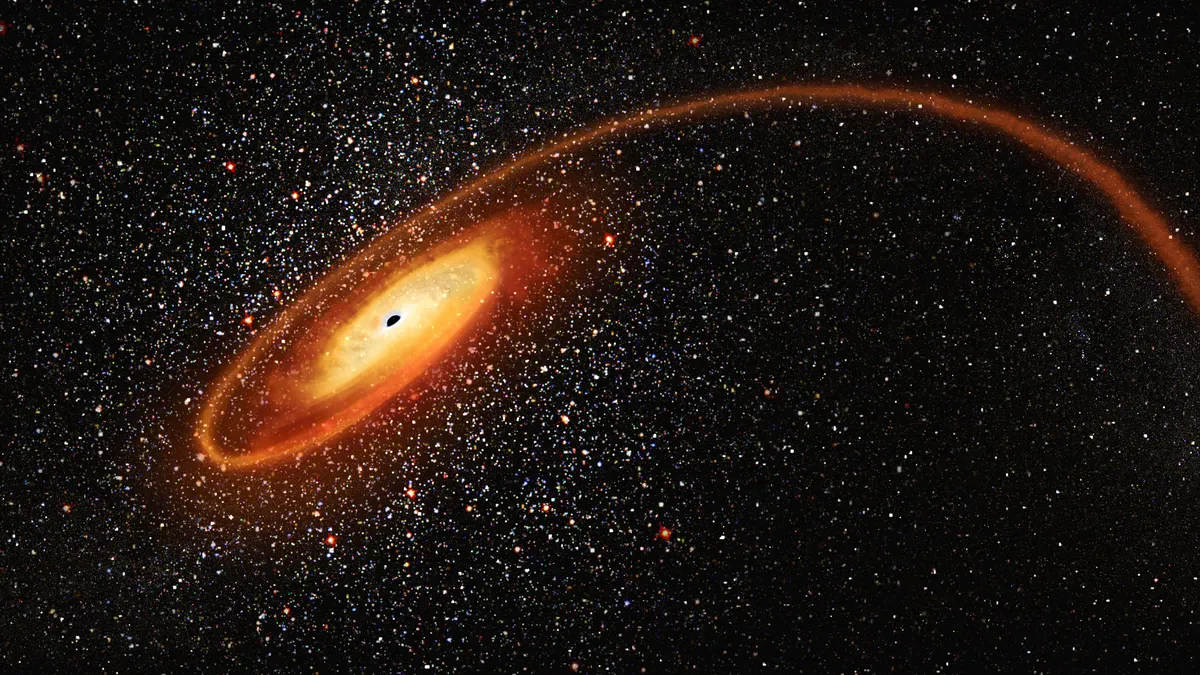
Image source: nasa.gov
19. When Black Holes Go Rogue
Most black holes lead settled lives, sticking to one spot in their host galaxy. But, just like that one adventurous friend we all have, some black holes can go rogue.
These wandering black holes move through galaxies, propelled by the gravitational force of a galaxy merger or a supernova explosion. While they’re not easy to detect (because they’re not actively consuming material), they’re out there, roaming the cosmic plains like interstellar cowboys.
20. Black Holes and Time – A Relativity Tango
Hold onto your watches because things are about to get timey-wimey. Stephen Hawking and other scientists believe that time behaves strangely near a black hole. As you approach a black hole, time appears to move slower relative to someone observing from afar.
So, hypothetically, if you hovered near a black hole for a while (and miraculously survived), you might age just a few days while centuries pass outside. Talk about a fountain of youth – space edition!
21. Do Black Holes Sing? Sorta…
Scientists have detected the ‘sound’ of a black hole humming. This isn’t sound as we understand it (since sound waves can’t travel in the vacuum of space) but rather, a specific frequency of oscillation in the black hole’s event horizon. This hum, akin to a B♭ note, is 57 octaves below middle-C, making it one of the deepest notes in the universe.
The black hole’s size determines its pitch, so think of the universe as a vast orchestra with black holes as its bass section.
22. A Portrait of a Black Hole
2019 was a hallmark year for astronomy. Why? We got our first-ever photograph of a black hole! Using the Event Horizon Telescope, scientists captured an image of the supermassive black hole in the galaxy M87, located a mere 55 million light-years away (neighborly, right?).
This was a huge leap in our history of galaxy study and understanding black holes, giving a face to the previously faceless.
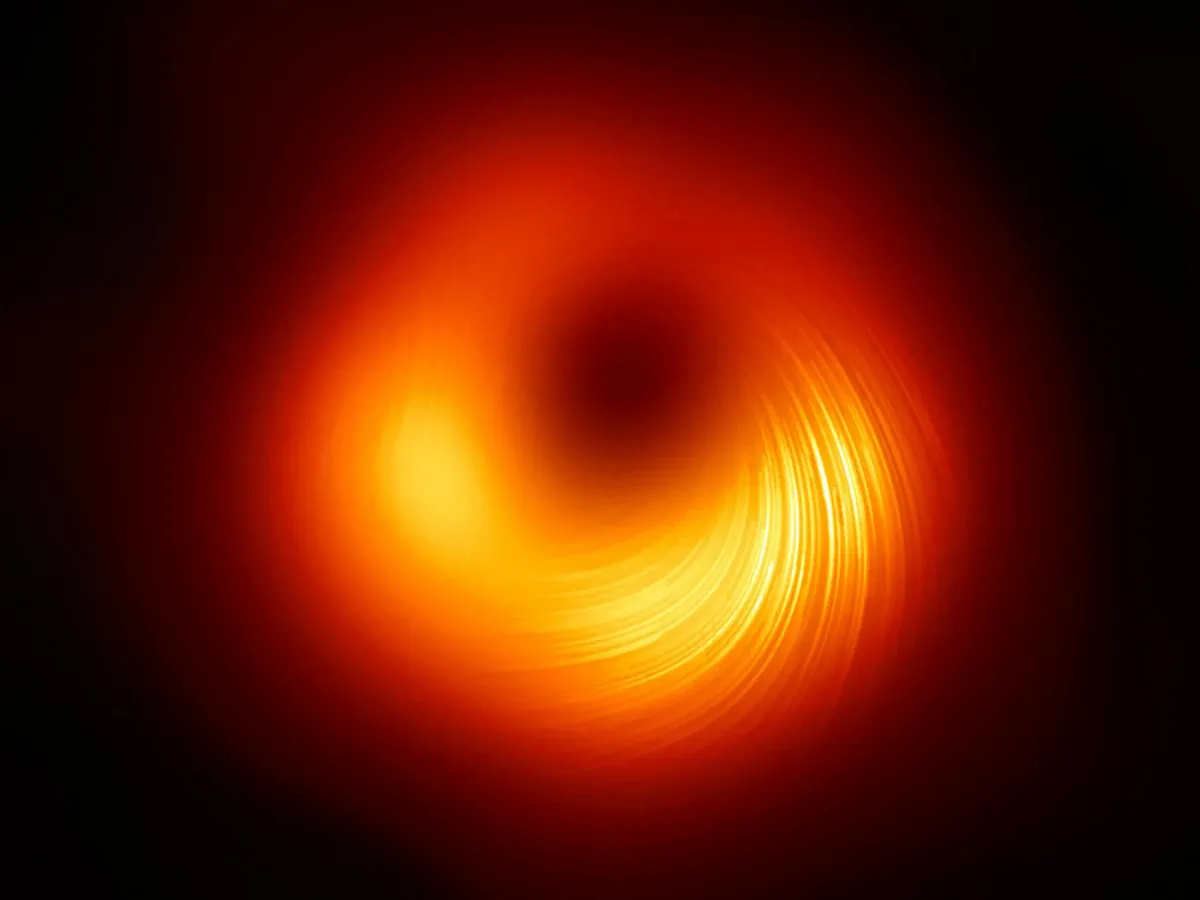
Image source: wired.com
23. Not All Black Holes Are Born Equal
While we usually think of black holes forming from dying massive
stars, there’s a theory suggesting the early universe birthed ‘primordial’ black holes. These would’ve formed from the high-density fluctuations right after the Big Bang.
While these primordial black holes remain hypothetical and no direct evidence supports their existence (yet), they could range from the mass of a planet to 10,000 times the mass of the Sun. So, how are galaxies formed with or without these ancient black holes? That’s a topic of hot debate and extensive research.
24. Galactic Architects at Work
You might be pondering, how are galaxies formed? Well, black holes play a key role in shaping their host galaxies. These cosmic vacuum cleaners can influence star formation rates and galactic evolution.
When black holes consume matter, they emit intense energy that can heat up nearby gas, making it harder for this gas to cool and condense into stars. Thus, black holes act like galactic sculptors, having a say in how their home galaxies evolve. Quite the hands-on landlords, aren’t they?
25. Galactic Cannibals: Size Matters!
When black holes meet, it’s a grand cosmic dance. But here’s a spicy black hole fun fact: the bigger one can consume the smaller! If two black holes come close enough, they can spiral into each other, creating gravitational waves in the process.
Eventually, the bigger black hole swallows the smaller one, becoming even more massive. So, in the world of black holes, size certainly does matter!
26. Black Holes and Dark Matter: BFFs?
One of the universe’s greatest mysteries is dark matter. We can’t see it, but it exerts gravitational pull. Some theories propose that primordial black holes (remember those ancient, theoretical ones?) could account for some of this elusive dark matter.
While there isn’t definitive evidence linking the two, the concept is tantalizing. Imagine: black holes being the key to unlocking the universe’s biggest secret!
27. Not Just A One-Way Street
Black holes are famous for gobbling up everything in sight. But did you know they can also “burp”? Yes, you heard that right. After consuming a lot of matter, black holes can eject powerful jets of energy and particles, a phenomenon seen in active galaxies with supermassive black holes.
So, while their appetite is legendary, they do know when they’ve had a tad too much and need to let off some steam.
28. A Speedy Diet: Black Holes and Their Feeding Habits!
If you’ve ever marveled at competitive eaters wolfing down dozens of hotdogs in minutes, you haven’t seen anything yet! Black holes can devour mass at mind-boggling rates, especially when they’re actively feeding. Some supermassive black holes can consume the equivalent of the sun’s mass in just a few days. But there’s a limit to this gluttony.
The Eddington limit, named after Sir Arthur Eddington, represents the maximum rate at which a black hole can continuously gobble up matter without pushing some of it away with the radiation it emits during the feast. So, while black holes have a monstrous appetite, even they know when to say, “I’m stuffed!”
29. A Black Hole’s Lifespan: Longer Than You’d Think!
Wondering about the age-old question, “How old do black holes last?” Strap in. Theoretically, black holes can exist almost indefinitely. But due to the previously mentioned Hawking Radiation, they can slowly evaporate. The catch?
This evaporation process is incredibly slow for large black holes. For instance, a black hole with the mass of the sun would last longer than the current age of our universe! The smaller primordial black holes might evaporate faster, but even they would exist for billions of years. So, if you’re looking for longevity tips, black holes seem to have cracked the code.
30. The Dance of Death: Black Holes and Their Stellar Partners!
Ever gone to a dance where your partner just won’t let you go? That’s a mild version of the tango between black holes and stars! When a star gets too close to a black hole, it can end up in a deadly dance. The immense gravitational pull from the black hole starts to strip away the outer layers of the star, causing a spectacle known as a tidal disruption event.
This is a stellar show unlike any other, as streams of star-stuff are stretched out and pulled into the hungry maw of the black hole. But not all the star’s material gets swallowed! Some of it can be ejected in bright flares as it interacts with the black hole’s magnetic fields. It’s a dazzling dance, but certainly not one you’d want a front-row seat for!
FAQ
What are 10 interesting facts about black holes?
Let’s dive in!
- Black holes are regions in space where gravity pulls so much that even light can’t escape.
- They can form when massive stars explode and their cores collapse.
- Black holes grow by feasting on stars, gas, and other black holes.
- Their boundary, called the event horizon, is the point of no return.
- Time behaves strangely near a black hole due to relativity.
- They can ‘sing’ with oscillations in their event horizons.
- The first photograph of a black hole was taken in 2019.
- They play a vital role in shaping galaxies.
- They can emit particles through Hawking Radiation.
- The No-Hair Theorem postulates that all outside information about a black hole can be determined by three observable parameters.
What is the most interesting fact about black holes?
It’s subjective, but many find the concept of Hawking Radiation – the idea that black holes can emit particles and potentially evaporate over time – to be one of the most intriguing facts.
What are some terrifying facts about black holes?
Anything that crosses the event horizon is doomed to be crushed to a point of infinite density.
Massive black holes can devour the equivalent of a sun in just days.
If two black holes merge, they can send gravitational waves that ripple across the universe.
Black holes have the power to tear apart stars that wander too close.
What are some interesting facts about black holes for kids?
Sure thing, kiddo! 🌌🚀
- Black holes aren’t actually ‘holes’; they’re super-dense spots in space.
- They have such a strong pull that not even light can escape them.
- Imagine a vacuum cleaner in space; that’s kinda what a black hole does, sucking up everything close to it.
- If you were near a black hole (but not too close!), time would seem to slow down.
- They can make a sound, but it’s like a super-deep note that we can’t hear with our ears.
How old do black holes last?
Black holes can exist almost indefinitely. While they can slowly evaporate through Hawking Radiation, this process is very slow, especially for large black holes. Some could even outlast the current age of our universe!
How old is the youngest black hole?
The youngest known black hole is in the SN 1979C supernova and is about 40 years old. It’s located in the Messier 100 galaxy, approximately 50 million light-years from Earth.
What can destroy a black hole?
In theory, black holes can “evaporate” over extremely long periods due to Hawking Radiation. However, this process is so slow that it’s not a practical “destruction” method. As of now, there isn’t any known mechanism to destroy a black hole in a traditional sense.
What happens if a black hole dies?
If a black hole “dies”, it would be due to the slow process of Hawking Radiation. As it emits this radiation, it loses mass, and over an extraordinarily long time, it could evaporate completely.
What happens when 2 black holes collide?
When two black holes collide and merge, they release a massive amount of energy in the form of gravitational waves. This cosmic event causes ripples in the fabric of spacetime.
What is the biggest black hole?
The title of the biggest known black hole goes to TON 618, a supermassive black hole with a mass of 66 billion times that of our sun, located about 10.4 billion light-years away from Earth.
What is inside a black hole?
This remains one of the great mysteries of modern physics. The center of a black hole, known as the singularity, is where the gravitational forces are believed to be so intense that spacetime curves infinitely, and matter is crushed to infinite density. Current theories break down at this point, so we don’t truly know what’s inside.
What is the closest black hole to Earth?
Closest known black hole to Earth is located in the V616 Monocerotis system, also known as V616 Mon. It’s situated about 3,000 light-years away from us. But no worries, it’s still far enough not to pose any threat!






